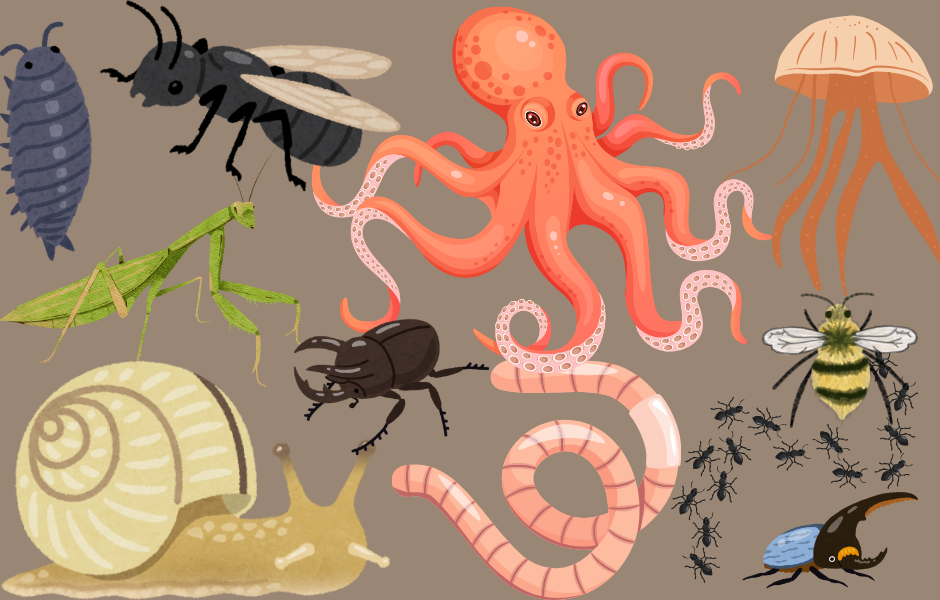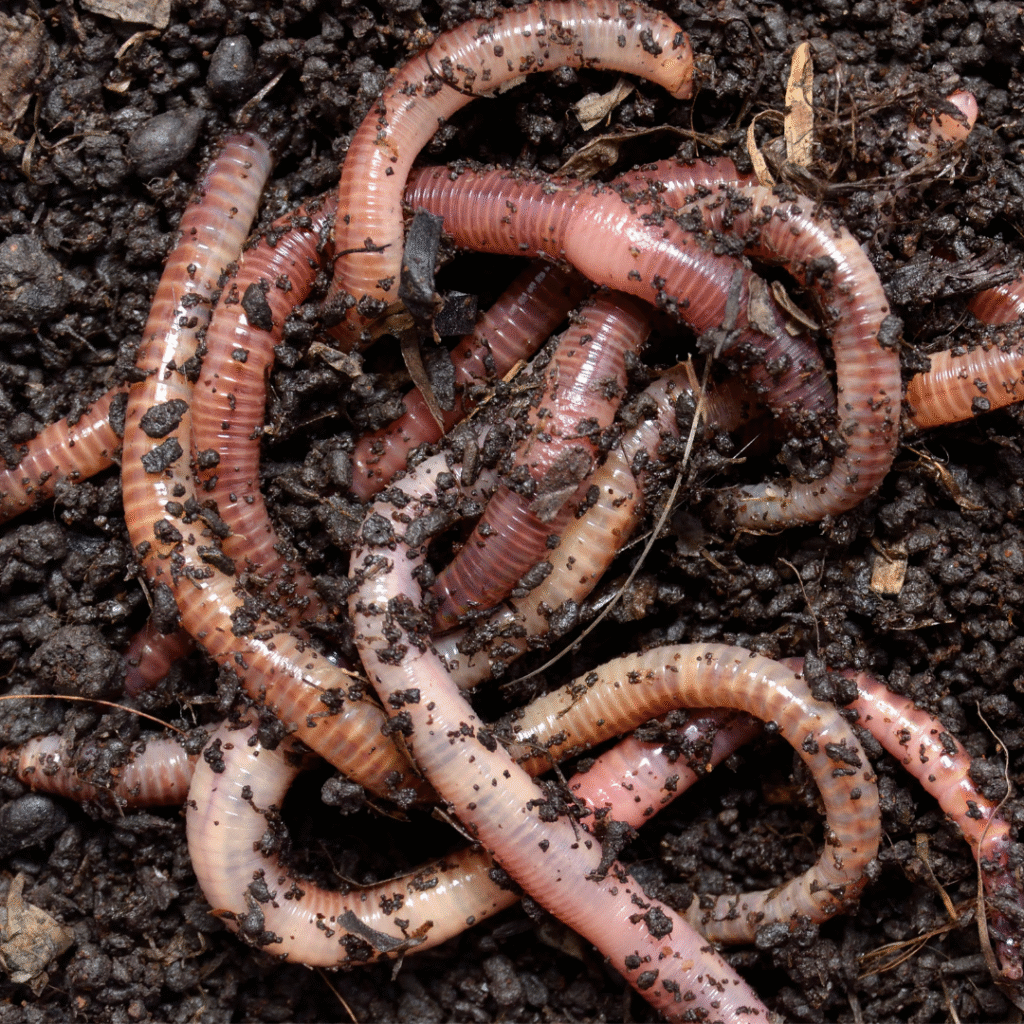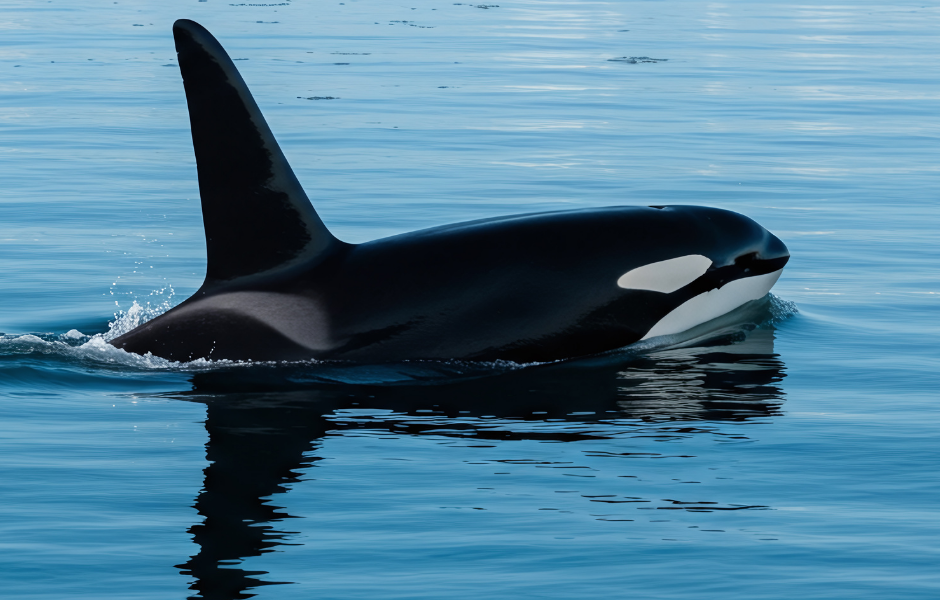
This children’s article, What makes an invertebrate an invertebrate?, has been written for native English speakers and learners of English as a second or foreign language. It can help children build vocabulary, learn about the fascinating world of invertebrates, and understand how they fit into the animal kingdom. Written by Mark Pulley, a teacher and writer who creates fun and informative news articles for English learners.
No bones about it
The main thing that all invertebrates have in common is that they don’t have a backbone. That’s what the word invertebrate means: “without a spine.” Unlike mammals, birds, fish, and reptiles, these animals don’t have bones to support their bodies.
Some invertebrates, like insects, have exoskeletons; hard outer shells that act like a suit of armour. Others, like octopuses, are completely soft and squishy. Even jellyfish have no bones, they’re made mostly of water!
So many types!
Invertebrates come in all shapes and sizes. There are more types of invertebrates than any other kind of animal. Scientists divide them into different groups. Here are some of the main ones:
- Insects – like ants, flies, and beetles
- Arachnids – like spiders and scorpions
- Molluscs – like snails, slugs, and octopuses
- Crustaceans – like crabs, shrimp, and lobsters
- Echinoderms – like sea stars and sea urchins
- Cnidarians – like jellyfish and corals
- Worms – including earthworms and flatworms
Insects are by far the largest group, there are over a million known species of insects alone!
Life without bones
Invertebrates are found everywhere, in oceans, forests, deserts, gardens, and even inside our bodies (yuck!). Some are tiny, like dust mites, while others, like giant squids, can grow longer than a bus!
Because they’re so different from each other, invertebrates have all sorts of ways to move, eat, and stay safe. A caterpillar might curl into a ball, a crab might hide in its shell, and a jellyfish might sting anything that gets too close.
Some invertebrates, like bees and earthworms, are incredibly helpful to humans. Others, like mosquitoes and ticks, are less welcome guests!
The unsung heroes
Even though they don’t have bones, invertebrates are super important for life on Earth. They pollinate plants, clean up waste, help make soil, and are food for lots of other animals. Without them, the world wouldn’t work the same way.
So next time you spot a bug or sea creature, remember, you’re looking at one of nature’s oldest and most fascinating animals. No backbone? No problem!

Article vocabulary list
- Invertebrate – an animal without a backbone
- Backbone – the set of bones (spine) that supports many animals
- Exoskeleton – a hard outer covering that protects an animal’s body
- Arachnids – a group of invertebrates with eight legs, like spiders
- Molluscs – soft-bodied animals, sometimes with shells
- Echinoderms – sea animals with spiny skin, like sea stars
- Cnidarians – soft-bodied sea animals with stingers
- Pollinate – to help plants make seeds by spreading pollen
Comprehension questions
Just click the plus (+) to see the answer
1. What is the main thing all invertebrates have in common?
A) They live in water
B) They have wings
C) They have no backbone
Answer: C) They have no backbone
2. Which animal group makes up most invertebrates?
A) Worms
B) Insects
C) Crustaceans
Answer: B) Insects
3. What is an exoskeleton?
A) A soft inner body
B) A protective outer shell
C) A kind of food
Answer: B) A protective outer shell
4. Which of these is a mollusc?
A) Crab
B) Snail
C) Spider
Answer: B) Snail
5. Where can invertebrates be found?
A) Only in oceans
B) Everywhere
C) Just in jungles
Answer: B) Everywhere
6. How are invertebrates helpful to humans?
A) They can drive cars
B) They build houses
C) They pollinate plants and clean up waste
Answer: C) They pollinate plants and clean up waste

Mark is a writer and EFL teacher from England with eight years’ experience. He’s passionate about travel, sport (especially football), animals, nature, and history, and enjoys helping children explore the world through language and learning.




